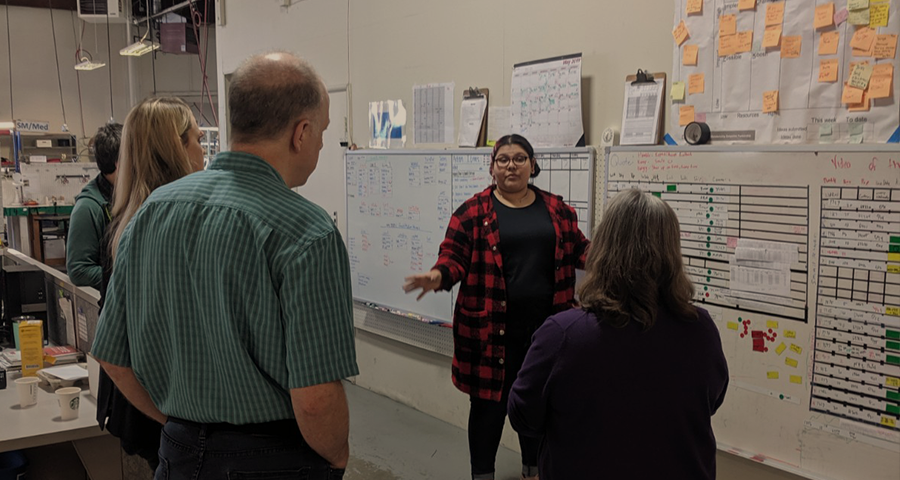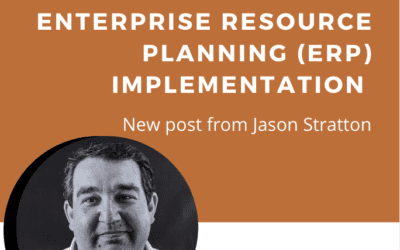I recently came across this blog post from marketing guru Seth Godin, and felt that it was very pertinent to manufacturers who want to make their workplaces great places to work. Read on for an insightful post about leadership, organizational transparency, and the foundational work of managing your workforce so they are engaged and motivated.
Organizations are built on the work of people who don’t get paid very much, don’t receive sufficient respect and are understandably wary of the promises they’ve been hearing for years.
Calling these folks the bottom of the org chart doesn’t help.
Imagine that throughout your career you were paid as little as legally possible, the last to be hired and the first to be laid off. Imagine that the boss gets more vacation days, doesn’t have to clock in and out, and is actually given control over how he spends his time.
Why is it surprising to bosses, then, that some workers respond to this arrangement by doing as little work as possible?
Here’s the thing: people actually want to do a good job. They want to be proud of their work, they appreciate being engaged, they thrive when they have some measure of control over their day.
Too often, though, the optimistic leader meets the pessimistic front line and distrust undermines all the good intent. The boss loses patience and reverts to the test-and-measure, trust-no-one, scientific-management tradition of dehumanizing the very humans who make the whole project work.
And so, back to being mediocre. Back to high turnover, low trust, no care. Back to workers who don’t believe and bosses who are now cynics.
Mostly, back to an ordinary organization that’s like so many others.
There’s an alternative. But it’s a process, not an event.
Step 1: A commitment, from the top, that this place is going to be different.
The commitment is open-ended. It involves leading and showing up and keeping promises, for months and years into the future. It’s non-cynical, and it views leadership as an opportunity, the possibility of serving customers at the very same time you inspire and enable employees.
This is going to take a long time, and it’s not going to be the cheapest path. It turns out, though, in industries where people matter (which is more and more of the work we do) that this path pays for itself eventually.
Step 2: Hire for attitude, not for learned skills.
You can teach someone to do just about anything. It’s far more difficult to build an instinct to care. When you hire trustworthy people who are willing to trust you, you have an opportunity to build trust, which enables communication, which allows you to teach, which upgrades everything.
If you are in a hurry to assemble a group of people who can ‘do the work’, you will end up with folks who merely needed a job. On the other hand, if you are willing to invest in people who are enrolled in the journey you’re on, you will end up with a team.
[Corollary: Fire for attitude, fix for skills. The attitudes you put up with will become the attitudes of your entire organization. Over time, every organization becomes what is tolerated]
Step 3: Be clear in actions and words about what’s important.
It doesn’t do any good to hire for attitude but only reward for short-term results. If you reward a cynic merely because he got something done, you’ve made it clear to everyone else that cynicism is okay. If you overlook the person who is hiding mistakes because his productivity is high, then you are rewarding obfuscation and stealth.
Who gets the employee of the month parking space? Who gets laid off?
People are watching you. They’re not listening to your words as much as they’re seeking to understand where the boundaries and the guard rails lie, because they’ve learned from experience that people who do what gets rewarded, get rewarded.
Hint: if you tell people something is important but fail to give them the tools and the support and the training that they need to do that important thing, you’ve just told them that it’s not actually important.
Step 4: Be clear and consistent about how we do things around here.
It’s going to be a long time before people act like they own the place. After all, you own the place and you don’t even act like you do most of the time.
This job is important. It feeds my family. It pays the rent. It’s connected to my self-esteem. I will act in the interest of my family, not your invisible shareholders.
Step 5: Your problem is not their problem.
The people who build the foundation of your business have plenty of things to worry about. Your narrative about your day is not one of them.
Over time, it’s reasonable to expect that an engaged and respectful working environment will lead to ever more big-picture thinking. But it’s naïve and self-defeating to expect a 20-year-old who’s been on the job for a week to make a connection between the customer who just walked in, your big wholesale account, the loan that’s due soon and the espresso he just pulled.
Every day, you’re going to be tested on these five principles. Every day, there’s going to be a moment of urgency, a shortcut presented, a confusion. And in that moment, the first principle is going to come into question.
But this is the foundation, it’s not the bottom. This is the source for all your possibility, for the change you seek to make.
Isn’t it worth it?
This blog was written by Seth Godin. All credit goes to Seth at http://sethgodin.typepad.com/seths_blog/2016/11/its-not-the-bottom-its-the-foundation.html
Be sure to read one (or more!) of his many fantastic books.




